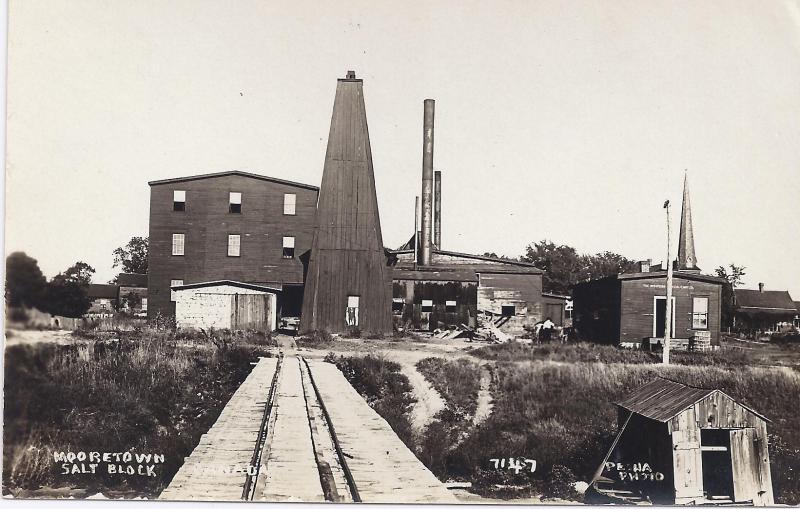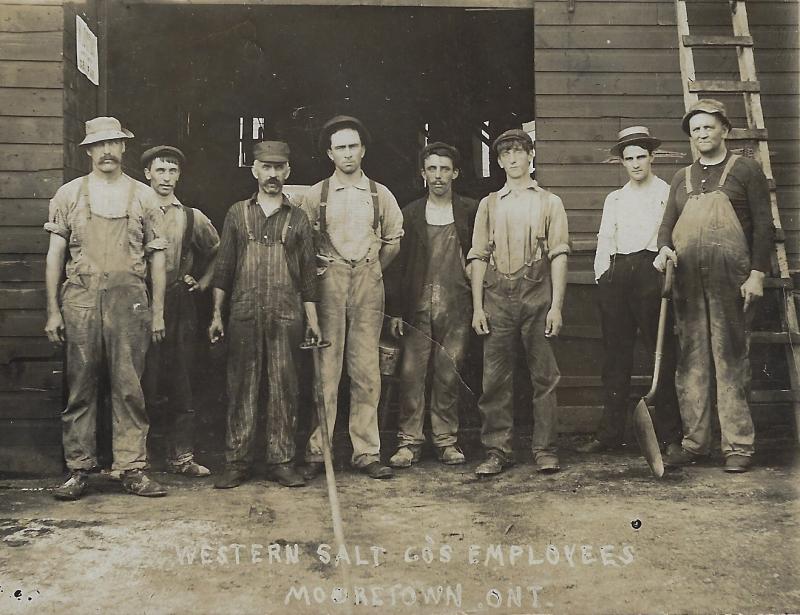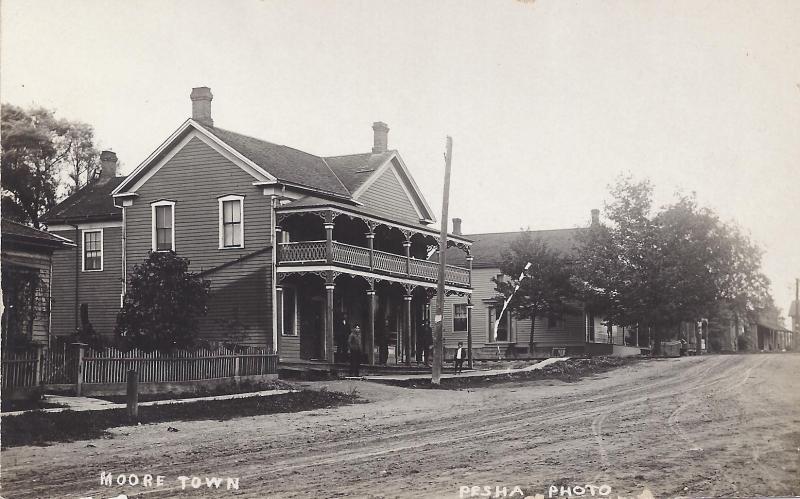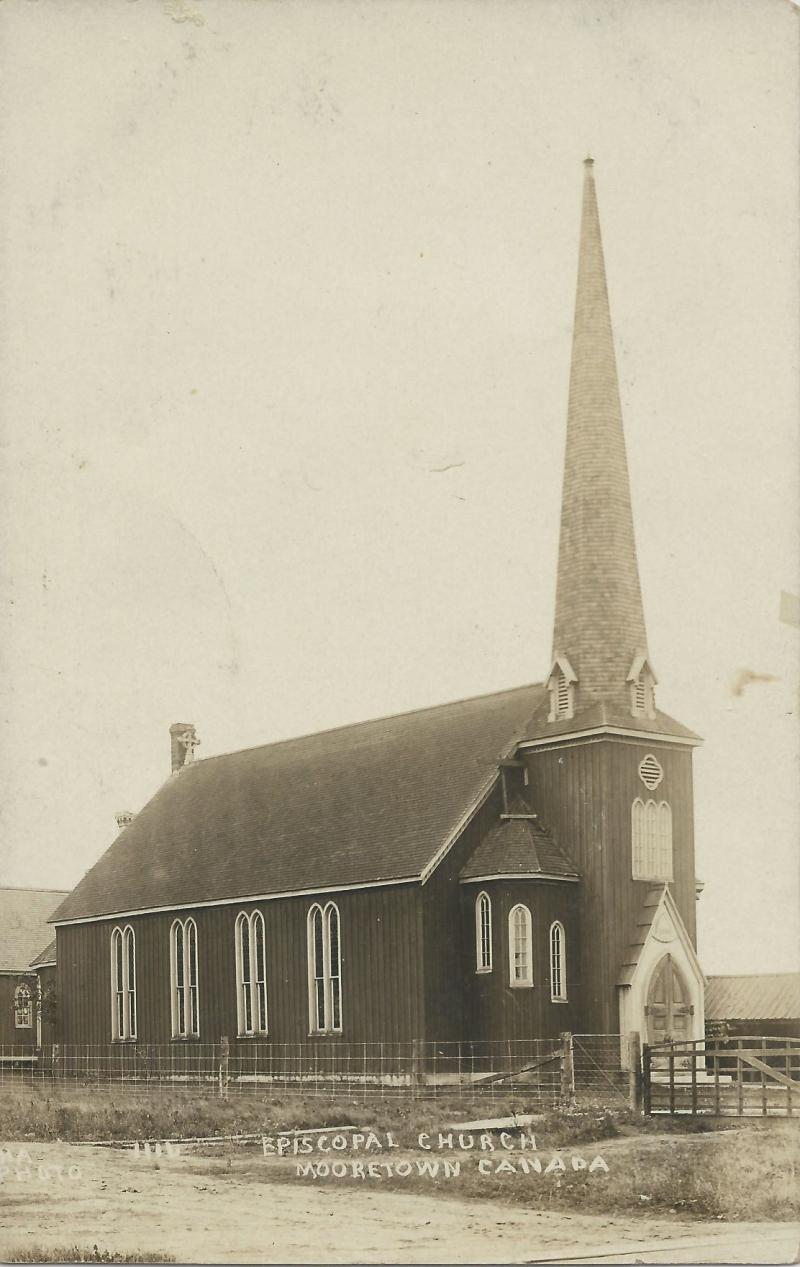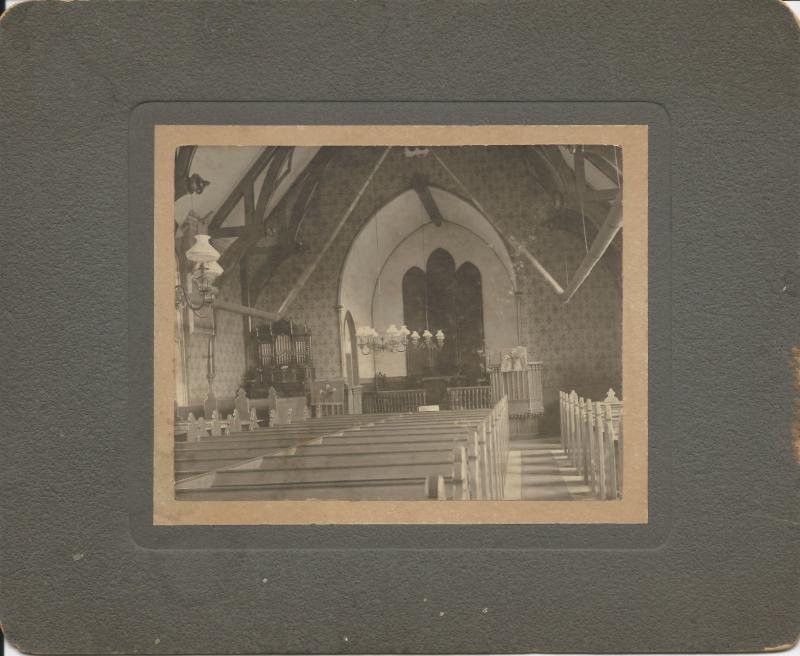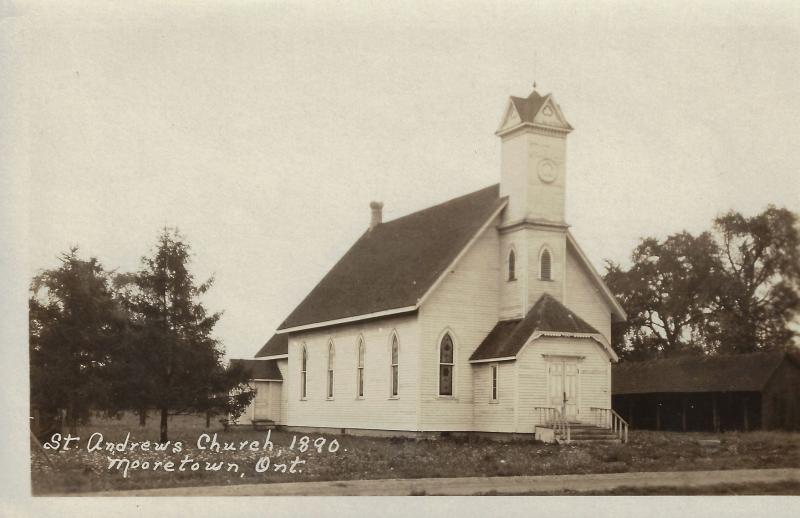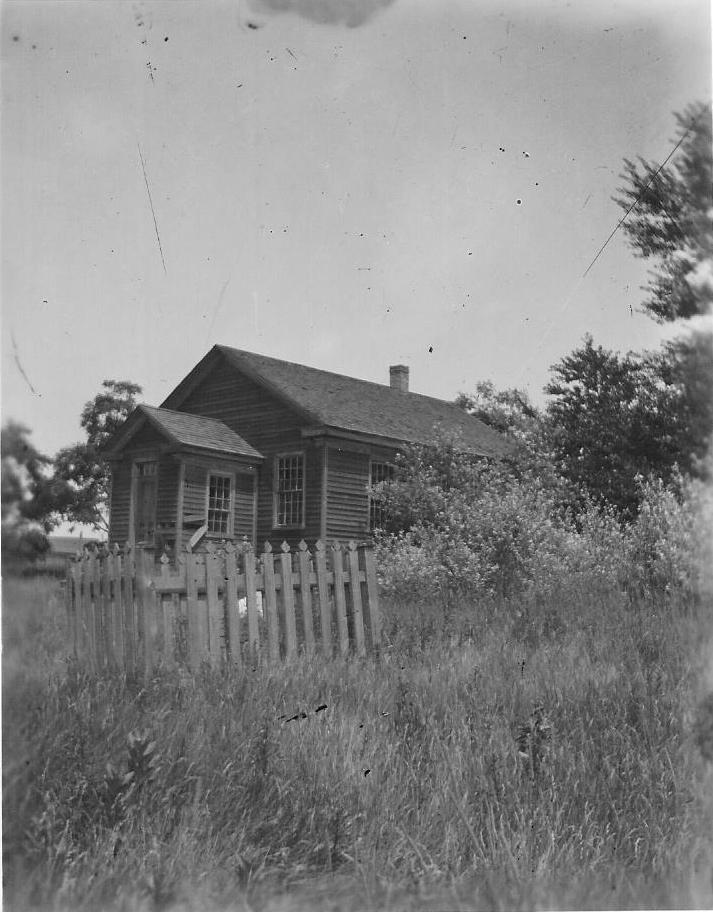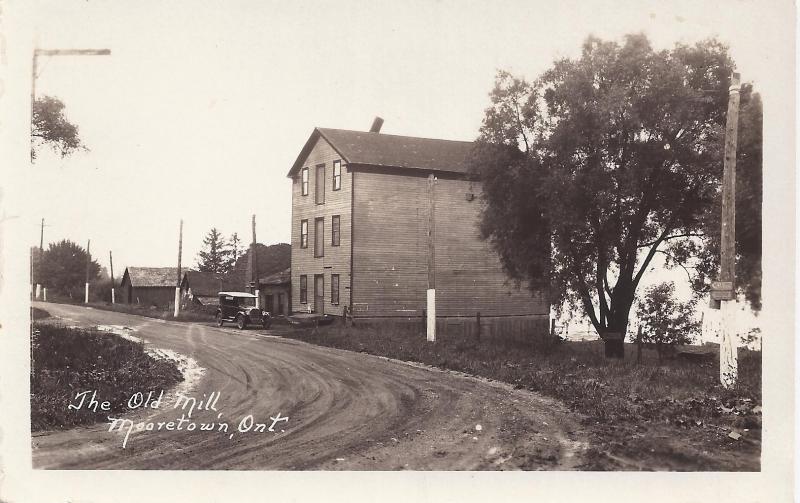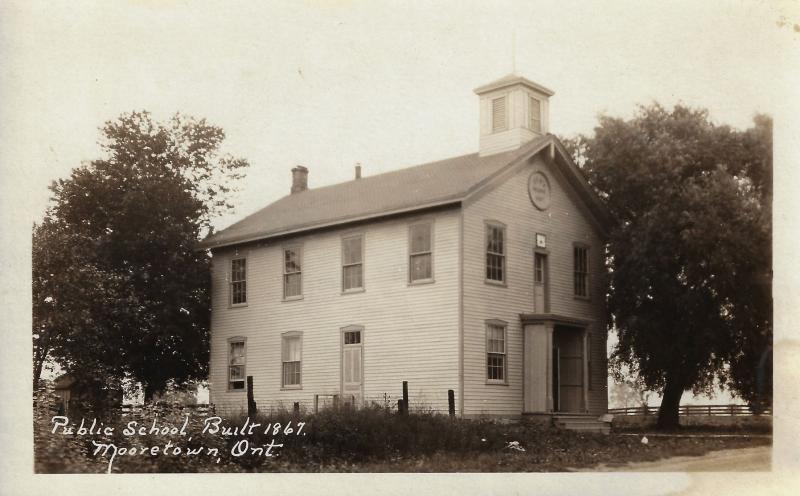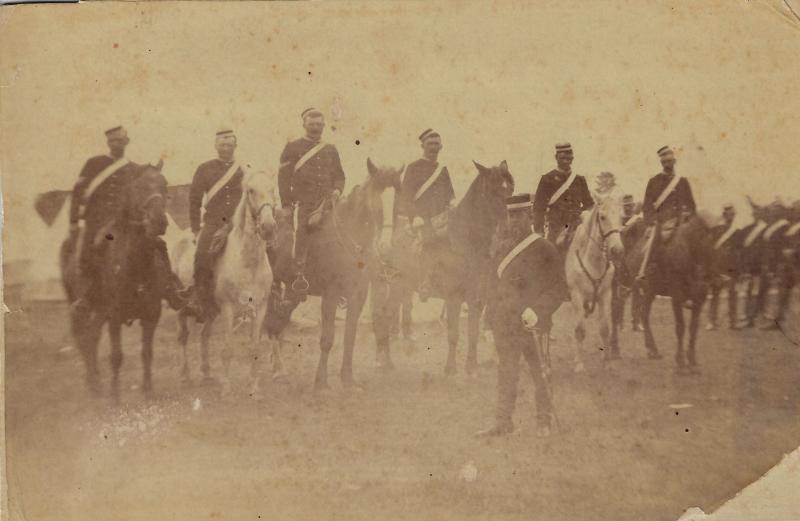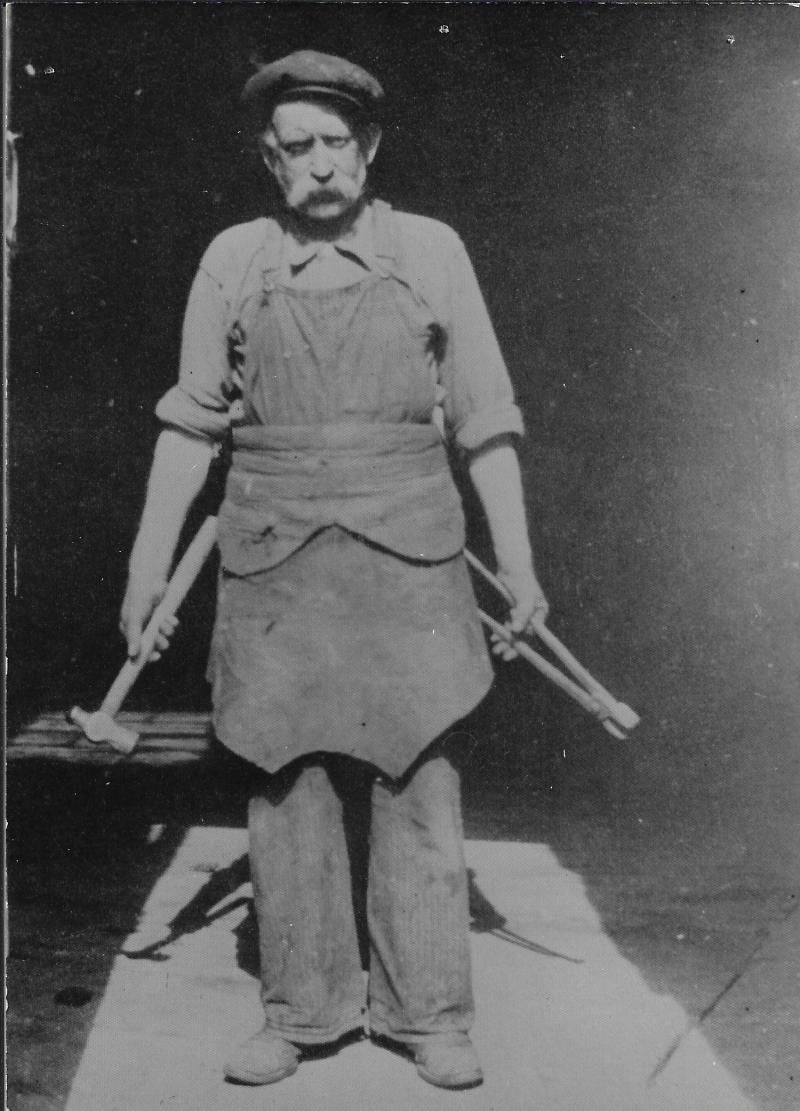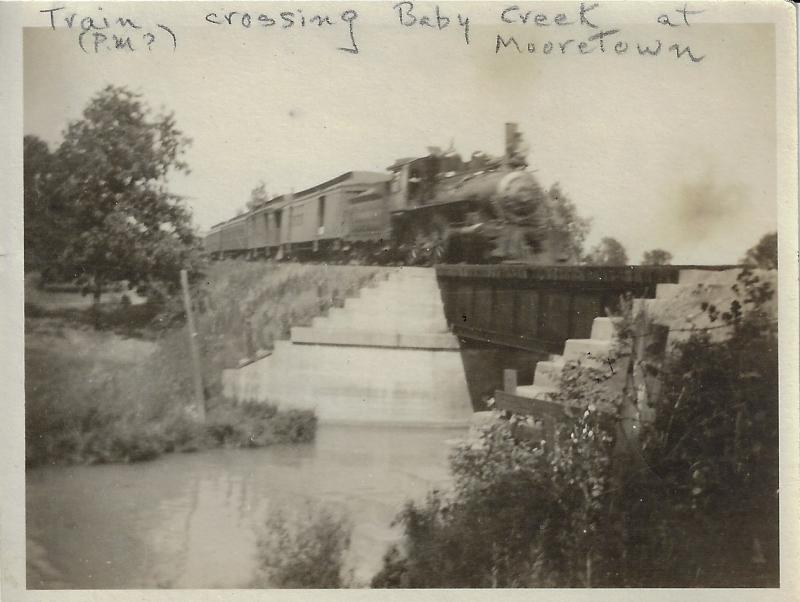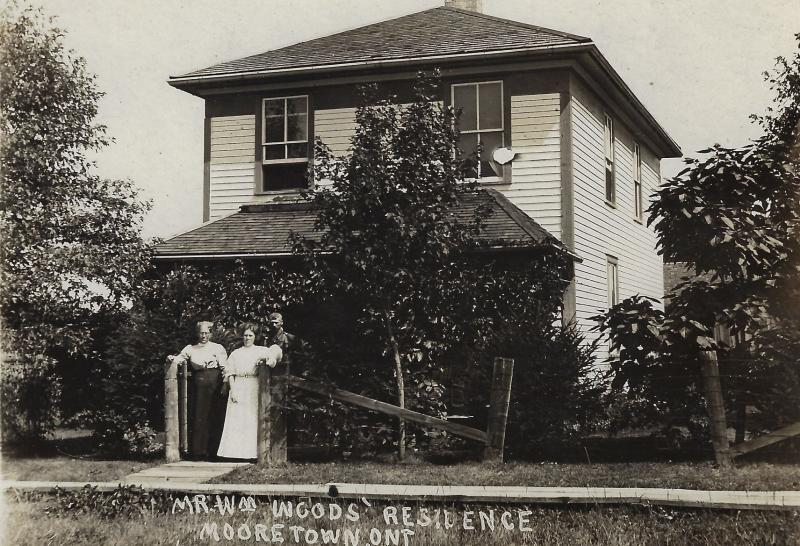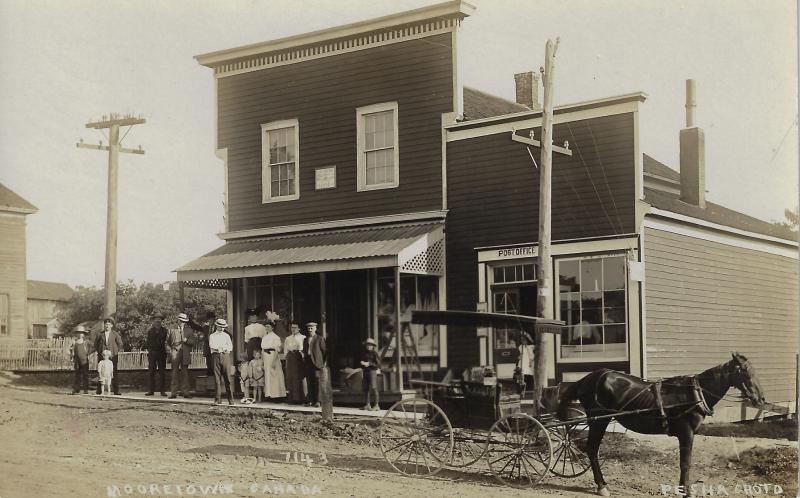
Early established villages were mainly along the river. By 1846, Sutherland’s Landing (halfway between present-day Mooretown and Courtright) was already a thriving village. In the early 1850s, however, James Bâby surveyed part of his farm into the village of Moore (later Mooretown). When Bâby was awarded one of the first four post offices in Lambton County, Moore began to outgrow Sutherland’s. By 1869, Mooretown was home to 17 businesses and 450 residents.
Following the great oil boom in Oil Springs, Mooretown also played a part in the oil industry, but only briefly. In 1862, Josiah Smith built an oil refinery at Mooretown. Wagons or sleighs brought the oil from Oil Springs to be stored in underground tanks until needed for the refinery. An anticipated plank road from Oil Springs to Mooretown was never built, however, so the refinery closed. Later, a salt block was established on the refinery site.
For more information, download A History of the Village of Mooretown, 1800 to 1900, by Isabella C. Finlayson.
